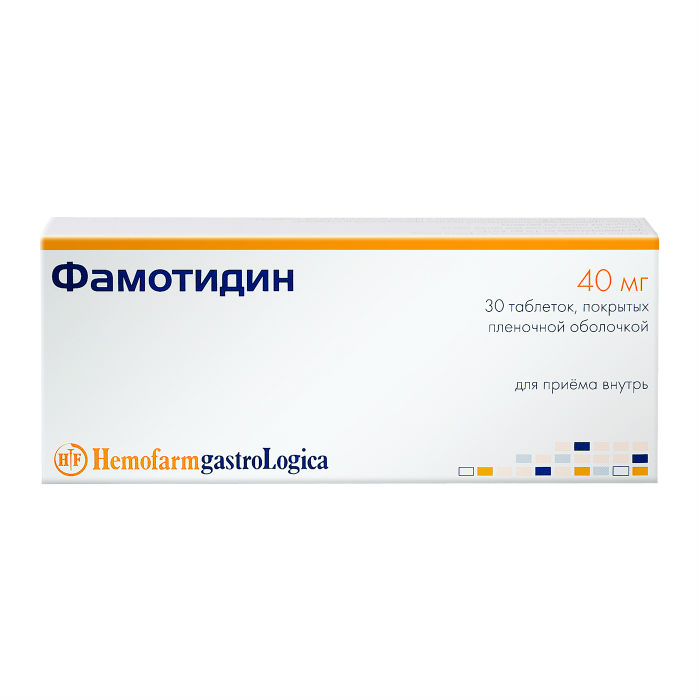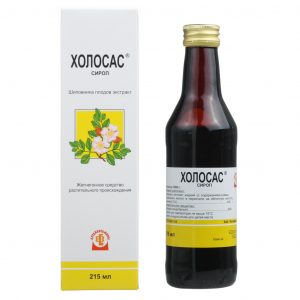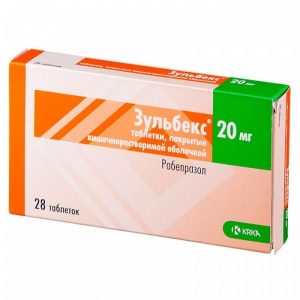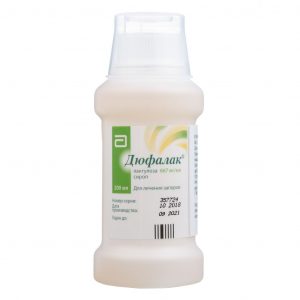Description
Description
Tablets film-coated 20 mg: round, biconvex tablets, film-coated, pale pink with a grayish tint, on a fracture of white color. Film-coated tablets 40 mg: round, biconvex tablets, film-coated tablets, pale brown with a slightly pinkish tint, on a fracture of white color.
Release form
Tablets, film-coated, pale brown, round, round.
packaging 10 pcs – blisters (3) – packs of cardboard.
Pharmacological action
Famotidine inhibits the release (secretion) of hydrochloric acid. In addition, this drug reduces the activity of the protein-breaking enzyme, pepsin. According to reviews, Famotidine begins to provide a therapeutic effect after 45-60 minutes after taking the initial dose. The duration of the drug is determined by the dose taken and ranges from 12 hours to a day.
Indications
Famotidine is recommended for inpatients who are unable to take the drug orally. Parenteral administration of famotidine can be used until oral therapy is possible.
– Duodenal ulcer
– gastric ulcer without malignancy (a good clinical effect in response to famotidine does not exclude the presence of malignancy of the ulcer)
– gastroesophageal reflux disease
– other conditions, such as gastrointestinal syndromes)
– prevention of Mendelssohn s syndrome (aspiration of acidic gastric contents) during general anesthesia.
Contraindications
– Hypersensitivity to famotidine or other components of the
drug – pregnancy and the period of breastfeeding
– under the age of 18 years.
Precautions:
Hepatic and / or renal failure, liver cirrhosis with encephalopathy (history), immunodeficiency states.
A history of allergy to other H2-histamine blockers (cross-sensitivity is possible).
Use during pregnancy and lactation
During pregnancy and lactation, the use of the drug is contraindicated.
Special instructions
Before starting therapy, or, if this is not possible, Before switching to oral treatment, it is necessary to exclude the presence of malignant neoplasms of the stomach.
For renal and / or liver failure, famotidine should be used with caution in a reduced dose.
Since cross-allergy has been described in the use of H2 histamine receptor blockers, the use of famotidine in patients with a history of hypersensitivity to other H2 histamine receptor blockers requires caution.
Impact on the ability to drive transp. Wed and fur .:
Patients should be careful when performing work requiring speed of psychomotor reactions (including when driving vehicles and working with equipment), because during treatment dizziness and fatigue can occur.
Composition
1 tablet film-coated 40 mg, contains:
Active ingredient famotidine 40 mg.
Excipients: corn starch – 32.0 mg, microcrystalline cellulose – 156.7 mg, silicon dioxide – 2.8 mg, talc – 11.25 mg, magnesium stearate – 2.25 mg, croscarmellose sodium – 5.0 mg .
Shell: hypromellose – 5.0 mg, titanium dioxide – 2.61 mg, lactose monohydrate – 2.625 mg, macrogol-4000 – 1.0 mg, triacetin – 0.75 mg, iron dye yellow oxide [E172] – 0.375 mg , iron dye oxide red [E172] – 0.125 mg, iron dye oxide black [E172] – 0.015 mg.
Dosage and administration
The drug is intended for intravenous administration only!
The initial dose for intravenous administration should not exceed 20 mg 2 times a day (every 12 hours).
The contents of the vial should be dissolved in 5-10 ml of 0.9% sodium chloride solution (solvent ampoule), and then slowly injected (for at least 2 minutes). When infusing the drug, the solution should be administered for 15-30 minutes.
Solutions should be prepared immediately before administration. Only clear, colorless solutions may be used.
Hypersecretory conditions, gastric and duodenal ulcer in the acute stage:
– slowly bolus, for 2 minutes, 20 mg 2 times a day
– drip, for 15-30 minutes, 20 mg 2 times a day.
Reflux esophagitis
– 20 mg 2 times a day intravenously slowly.
Zollinger-Ellison Syndrome
Initial dose is 20 mg intravenously every 6 hours. If necessary, the dose of the drug is increased depending on the volume of acid production and the clinical condition of the patient.
To prevent aspiration of acidic gastric contents during general anesthesia,
– 20 mg in the morning on the day of surgery or at least 2 hours before it begins.
Renal failure
Since famotidine is excreted mainly by the kidneys unchanged, precautionary measures should be taken in patients with severe renal failure. If the creatinine clearance is less than 30 ml / min, and the serum creatinine concentration exceeds 3 mg / 100 ml, the dose must be reduced to 10 mg or the intervals between the usual doses should be increased to 36-48 hours.
Children
Safety and efficacy of the drug in children have not been fully established.
Old age (over 65)
Dose adjustment based on age is not required.
Side effects
The incidence of adverse events after the use of the drug is classified according to WHO recommendations: rare ( 1/10000 and <1/1000), very rare (<1/10000), frequency unknown (determine frequency of occurrence based on available data possible). From the gastrointestinal tract: rarely – diarrhea, constipation very rarely – a feeling of discomfort in the abdomen, nausea, vomiting, dry mouth, anorexia, various taste disorders. From the side of the liver and biliary tract: very rarely cholestatic jaundice. From the central nervous system: rarely – headache, very rarely – dizziness, seizures epileptiform. From the psyche: very rarely – depression, hallucinations, arousal, anxiety, confusion, insomnia drowsiness. From the musculoskeletal system: very rarely – arthralgia, myalgia. muscle spasms. From the blood and lymphatic system: very rarely – agranulocytosis, leukopenia, pancytopenia, thrombocytopenia. From the skin and subcutaneous tissues: very rarely – acne, alopecia, dry skin, toxic epidermal necrolysis. From the hearing organ and vestibular system: frequency unknown – tinnitus. From the genitals and mammary gland: very rarely – gynecomastia (when treatment is stopped is reversible), decreased libido, impotence. From the side of the immune system: very rarely – anaphylaxis, urticaria, skin rash, hyperemia of the sclera and skin, angioneurotic edema, swelling of the periorbital areas of the eyes, face. From the cardiovascular system: very rarely – arrhythmia, atrioventricular blockade, palpitations. From the respiratory system, chest and mediastinum: very rarely – bronchospasm. General disorders and disorders at the site of administration: very rarely – increased fatigue, asthenia, fever. Laboratory and instrumental data: very rarely – increased activity of liver enzymes. Drug Interaction Compatible with 0.9% sodium chloride solution, 5% dextrose solution, 4.2% sodium bicarbonate solution. Increases the absorption of amoxicillin and clavulanic acid. sraclkp Antacids and sucralfate slow down the absorption of famotidine after oral administration. Reduces absorption of itraconazole and ketoconazole. Bone marrow depressants increase the risk of neutropenia. Overdose of In patients with pathological hypersecretion syndrome, doses up to 800 mg per day were prescribed for a period of more than one year, which was not accompanied by the occurrence of serious adverse events. Treatment: symptomatic and supportive therapy monitoring the patient’s condition. Storage Conditions In a light-proof location, at a temperature not higher than 25 ° C. Keep out of the reach and sight of children. Expiration 3 years. Do not use after the expiry date stated on the pack. active substance famotidine




